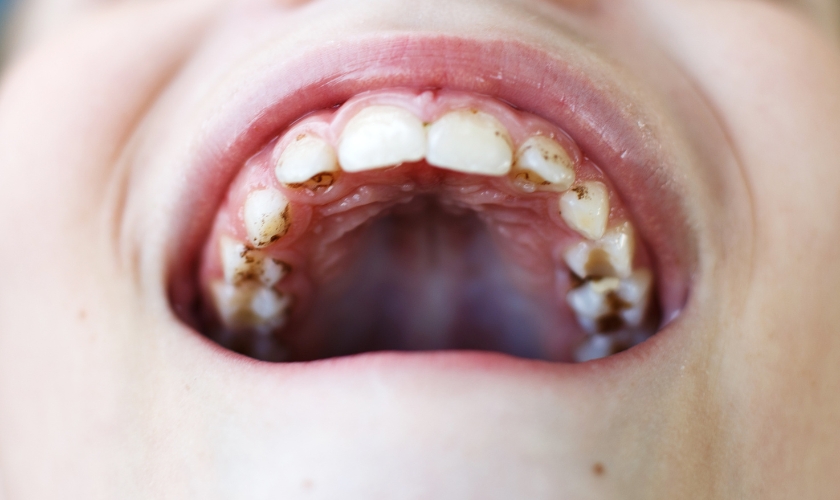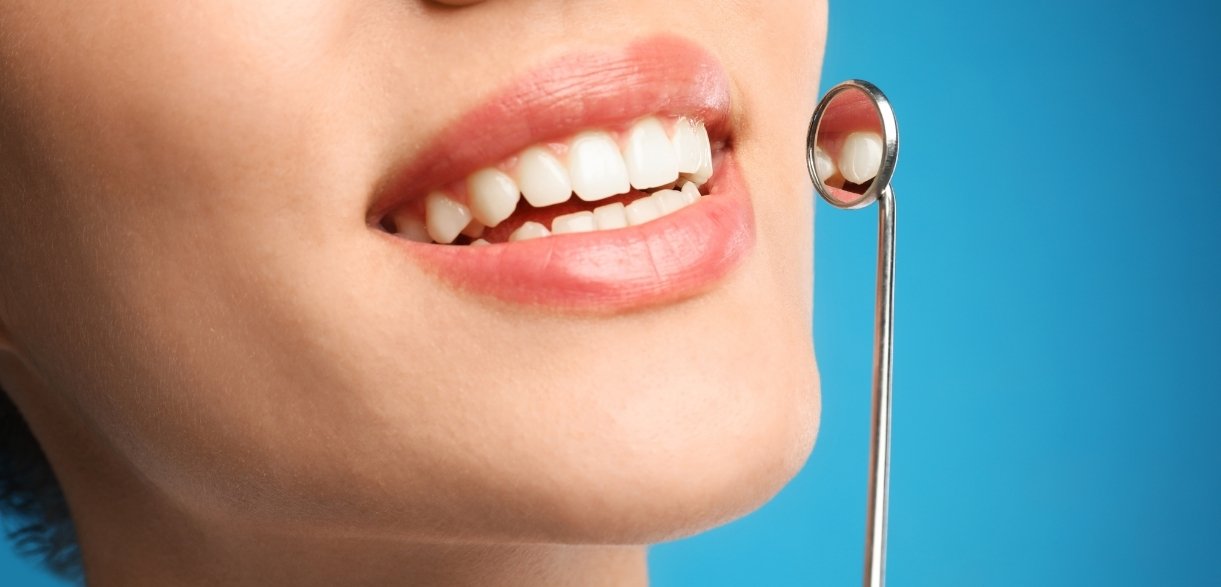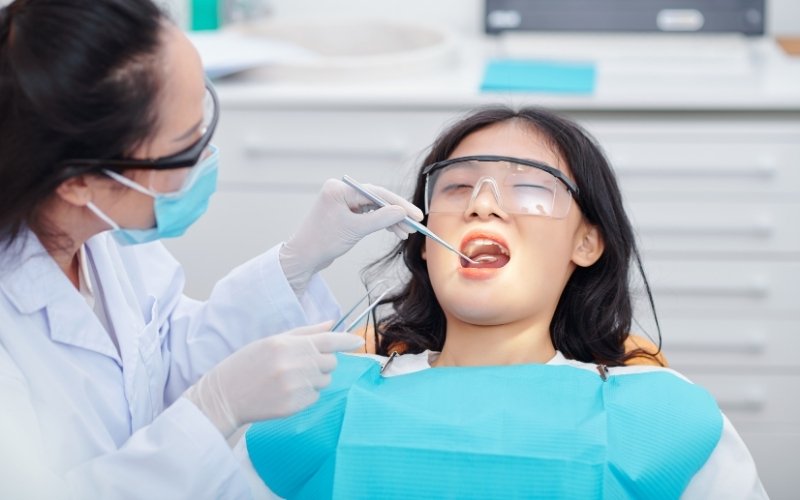1520 Green Oak Place, Suite B Kingwood, Tx 77339
Understanding Black Spots on Teeth: Causes, Removal & Prevention

Black spots on teeth, medically known as dental extrinsic stains, are discolorations that appear on the outer surface (enamel) of your teeth. These spots can range in size and color, from small, flat marks to larger, deeper stains that appear almost black. While unsightly, black spots don’t always indicate a serious problem.
Here’s a closer look at what black spots are and how they differ from cavities:
- Black spots are typically surface stains caused by external factors like food, drinks, or tobacco use.
- Cavities, on the other hand, are areas of tooth decay that penetrate the enamel and reach the inner dentin layer. Cavities can cause pain, sensitivity, and eventually lead to tooth loss if left untreated.
Black spots can appear anywhere on your teeth, but they are most commonly found on:
- Chewing surfaces of molars and premolars
- Near the gumline (due to plaque buildup)
- Between teeth (in areas difficult to clean)
10 Main Causes of Black Spots on Teeth
Black spots on teeth can arise from various factors, affecting both your oral hygiene habits and dietary choices. Here are the 10 main culprits behind these unsightly stains:
- Poor Dental Hygiene: Brushing and flossing twice daily are crucial to remove plaque, a sticky film containing bacteria. If plaque isn’t removed, it hardens into tartar (calculus), a brown or black deposit that can trap further stains and irritate the gums.
- Certain Beverages: Coffee, tea, red wine, and dark sodas are notorious for staining teeth. These beverages contain chromogens, pigments that adhere to the enamel and cause discoloration.
- Tobacco Use: Smoking cigarettes, cigars, or using chewing tobacco can leave behind dark stains on teeth. Tar and nicotine from tobacco products readily adhere to the enamel, creating stubborn stains.
- Certain Medications: Chlorhexidine mouthwash, commonly used for gum disease, can cause brown staining on teeth. Iron supplements can also leave dark stains as a side effect.
- Fluorosis: Excessive fluoride exposure during childhood tooth development can lead to fluorosis, a condition characterized by white or brown mottling of the teeth.
- Dietary Factors: Frequent consumption of certain foods like berries (blueberries, blackberries), soy sauce, and curries can stain teeth. Artificial colorings in processed foods can also contribute to discoloration.
- Trauma to the Tooth: A chipped or cracked tooth can allow pigmented substances to penetrate the dentin layer, showing through the enamel as a dark spot.
- Cavities: In advanced stages, cavities can appear as dark spots on the teeth. As decay progresses, the dentin layer becomes exposed, which is naturally darker than enamel.
- Sunken Enamel (Erosion): Over time, acidic foods and drinks can erode tooth enamel, making the underlying dentin more visible and appearing as dark spots.
- Gingival Hyperplasia: This is an enlargement of the gums, sometimes caused by side effects from medication. The enlarged gum tissue can cover more tooth surfaces, creating the appearance of black spots near the gumline.
Safe Removal Methods for Black Spots
While black spots can be a cosmetic concern, the safest and most effective removal method depends on the underlying cause. Here’s a breakdown of different approaches:
Consulting a Dentist is Key:
Before attempting any removal methods, it’s crucial to schedule an appointment with your Kingwood dentist. They can accurately diagnose the cause of your black spots and recommend the most suitable treatment approach.
Professional Teeth Cleaning:
For most surface stains caused by plaque and tartar buildup, a professional tooth cleaning by your dentist is the gold standard. This cleaning, also known as scaling and polishing, removes plaque and tartar using specialized tools, leaving your teeth sparkling clean and free of stains.
At-Home Whitening Treatments (with Dentist Guidance):
For deeper stains or overall teeth whitening, your dentist might recommend at-home whitening treatments like bleaching trays or strips. These products use mild bleaching agents to lighten tooth discoloration. However, it’s important to consult your dentist before using any at-home whitening products to ensure they are safe for your teeth and gums.
Lifestyle Changes:
In some cases, simple lifestyle changes can significantly improve the appearance of black spots and prevent future staining. This may include:
- Improved Brushing Technique: Brushing your teeth twice a day for two minutes with fluoride toothpaste and using proper brushing techniques can help remove surface stains and prevent plaque buildup.
- Dietary Modifications: Limiting consumption of staining foods and beverages or using a straw when drinking dark-colored drinks can minimize future discoloration.
Important Note: There are some situations where attempting DIY removal of black spots is not recommended. If the black spots are suspected to be cavities, caused by trauma, or associated with gum issues, consulting a dentist in Kingwood is essential to address the underlying problem and prevent further complications.
Preventing Black Spots on Teeth
Developing a consistent oral hygiene routine and making smart dietary choices are the cornerstones of preventing black spots on teeth. Here are some key strategies:
- Maintain Good Oral Hygiene: Brushing your teeth twice a day for two minutes with fluoride toothpaste and flossing daily are essential for removing plaque and preventing its buildup. Consider using a tongue scraper to remove bacteria from the tongue, which can also contribute to stains.
- Regular Dental Checkups and Cleanings: Schedule regular dental checkups and cleanings (typically every six months) for professional plaque and tartar removal. This not only helps prevent stains but also allows your dentist to detect and address any potential dental issues early on.
- Limiting Staining Foods and Beverages: While you don’t have to eliminate your favorite coffee or red wine entirely, try to limit their consumption. Drinking water after consuming staining beverages can help rinse away some of the pigments.
- Smoking Cessation: Smoking and tobacco use are major contributors to tooth stains. Quitting smoking is not only beneficial for your overall health but also significantly improves the appearance of your teeth.
- Using a Straw for Dark-Colored Drinks: When consuming dark-colored drinks like coffee, tea, or soda, using a straw can help minimize contact with your teeth, reducing the risk of staining.
- Choosing the Right Toothpaste and Mouthwash: Look for a toothpaste with fluoride to strengthen enamel and fight cavities. Consider a whitening toothpaste for an extra boost, but consult your Kingwood dentist before using one long-term. Choose an alcohol-free mouthwash to avoid drying out your mouth, which can worsen staining.
Frequently Asked Questions
Not necessarily. In many cases, black spots caused by surface stains can be removed with professional cleaning or at-home whitening treatments with dentist guidance. However, black spots caused by advanced cavities or enamel erosion may require more complex dental procedures.
Black spots themselves typically don’t cause cavities. However, in some cases, black spots can be a sign of early-stage cavities. If the black spot is accompanied by pain or sensitivity, it’s crucial to see a dentist for diagnosis and treatment to prevent the cavity from progressing.
There are many DIY remedies circulating online for removing black spots. However, these remedies are often ineffective and may even damage your teeth. It’s best to consult your dentist for the safest and most effective removal method based on the cause of your black spots.







